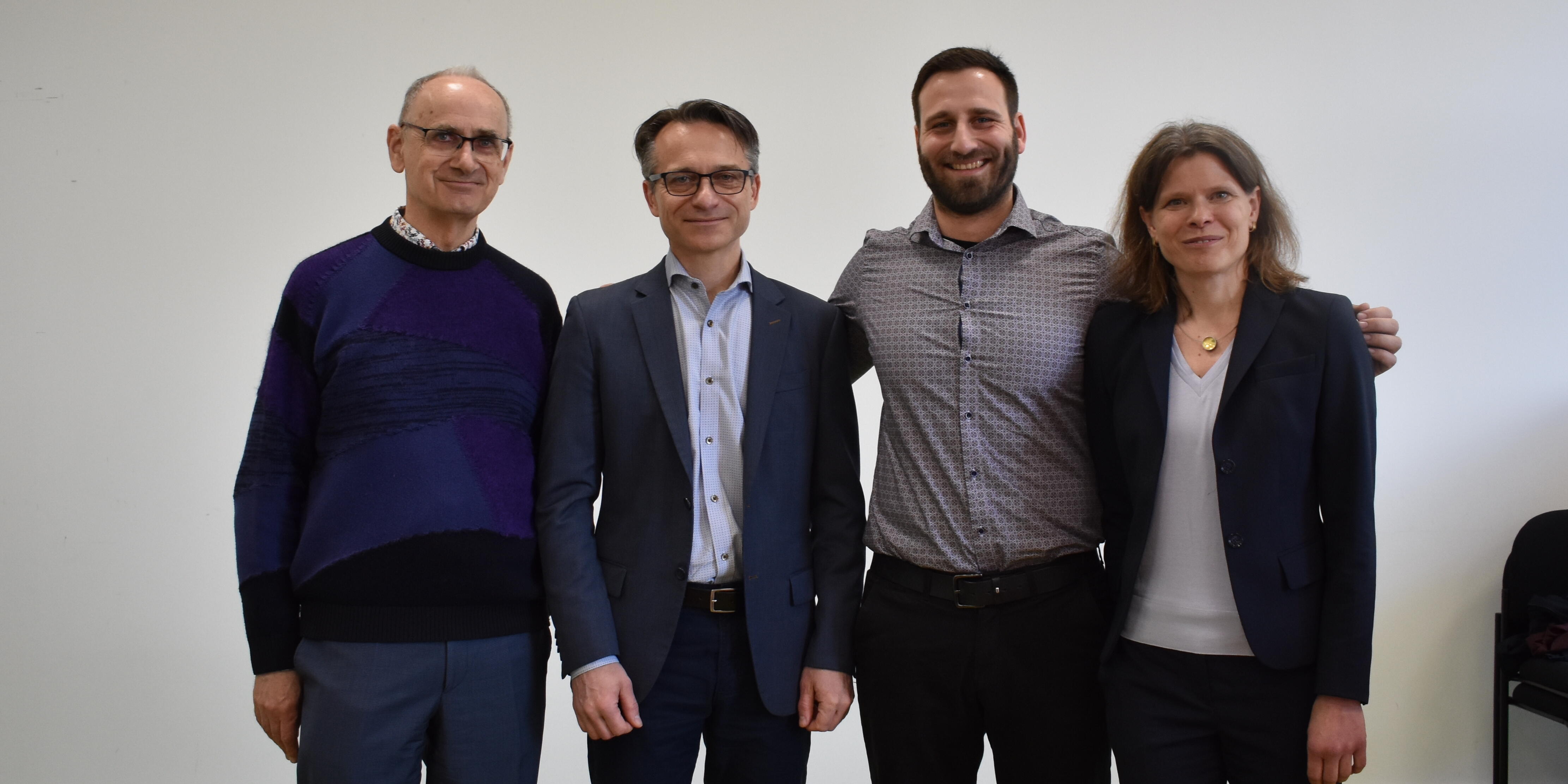New from the departement of Neuromotor behavior and exercise


Neuromotor team runs


Public job advertisement


BA/MA-Thesis


Girls' Day 2025


Team days 2025


New Degree Programme Coordinator Appointment


New team member


Successful start for the TReND fellows


Sofía Avila Pérez gets new team member


Do not underestimate the cognitive benefits of exercise


Lena Kopnarski nominated for European Championship


Closing event of the CRC Hybrid Societies


Synchronous recording of gait data and neurophysiological processes


Successful PhysAgeNet/ EGRAPA Conference


What does a science of individualization need?


Presentation 'Parkinson Vibrating Socks' in Steinfurt


Stefan Maas joins Parkinson Project


Invitation to the 12th Annual Winter Academy of the University of Bern


New team members


Handover actions


Thesis award to Robert Stojan


Society for Neuroscience


Another new employee


New Employee


DVS Hochschultag


Brain networks of bimanual coupling


New Paper


Streamlining Interdisciplinary Communication:
A Comprehensive Framework for Handover Actions with Unified Language and Phases


Visit to Inzell


Project start "Parkinson Vibrating Socks”


BA-Thesis to be assigned


Graduated with flying colours


New Paper within the PROCARE project


Funding of Innovation Project iHand


International Conference on Hybrid Societies


School sports festival track & field


New OCC member


Free will shown again


54th asp conference successfully concluded


Department of Neuromotor behavior and exercise gets “collaboration grant”


Can children and adolescents benefit from dual-task training?


Ross Julian obtained his doctorate


Two new publications in the SENDA project


Exercise recommendation for the elderly from the PROMOTE project


Presentation at the European Handball Federation Scientific Conference 2021


Results of the MIND2 project at Neuroscience 2021


The acute effects of blood flow restriction exercise: Can cooling mitigate the negatives?


DAAD scholarship to Evrim Gökçe


EEG during visual motoric controll of hand strength


Melanie Mack obtained her doctorate


New Paper

Soccer players and managers have every right to be concerned about the amount of games they play.


Effect of Fixture Congestion in Professional Soccer


Effects of Moderate Acute Exercise on Working Memory Performance


Call for Papers


Nursing Home Residents have a very low physical activity


New Paper published


Another book project is finished in the department neuromotor behaviour and exercise


Nils Pixa is winner of the research award of the "Freunde der Universität Mainz e.v." of the Gutenberg Junior Research School


New Paper published

Obituary Holger Heppe


Studyprotocol by the „PROCARE - Prevention in nursing homes“ project publiced


Visualization project enters the second round


Book project completed


German Journal of Exercise and Sport Research becomes OA journal (dvs e. V.)


Reviewers wanted


Measurements in the Joint Action Study completed


Further measurements in the beach project to visualize the jumping and throwing techniques in handball


Pilot study in boxing

Intervention study finished

Further application for additional funds in beach handball project aproved for video recording

Successful application for the extension of the beach handball project

Project visualization of the throwing movements at handball


























































































